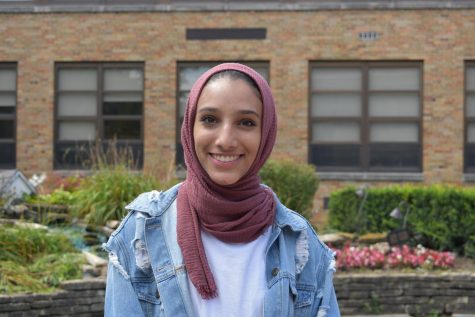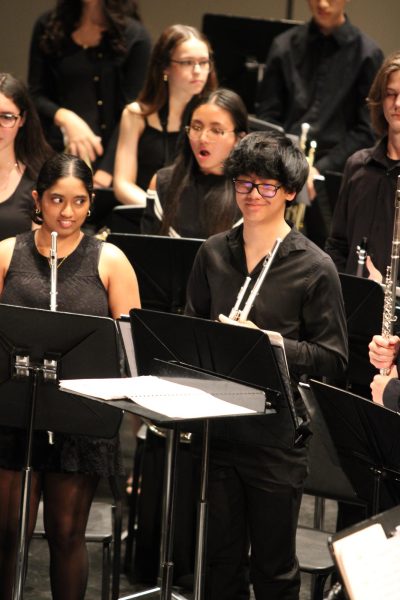Residents frustrated over elimination of Buffer Zone
Residents’ and students’ frustrations have been growing since the D86 Board of Education decided to eliminate the buffer zone.
Over the summer the district made the final decision to remove 145 students from the buffer zone and on Monday, Sept. 17 the school board voted on the specific borders for the buffer zone elimination. D86’s contested buffer zone was a problem that had been perpetually brought up last year, creating great controversy with district residents; and now the solution has been finalized, yet there are many residents who not approve.
The vote in the original board meeting was 5-2 in favor of removing the buffer-zone; however at the September board meeting, members voted unanimously in favor of the buffer zone change. Now, out of the 227 students in the buffer zone 145 will attend Hinsdale South High School, while last year 27 students chose South over Central. Supporting the prediction of many, the eliminated zones have been decided to be primarily a part of both the Maercker and Gower Districts.
The buffer zone includes an area west of Route 83 and south of 63rd Street, and south of 67th Street between Route 83 and Madison Street. Those living in this community will now attend South.
The original decision was made on Monday, June 18 at Hinsdale South and according to the Tribune, over 400 people attended. Many of the attendants were from the Maercker School District, the district that will be most affected by the elimination of the buffer zone.
After the decision was made, according to the Tribune, the crowd became so riled up that the school board had to leave the stage to allow the audience to settle. Police were present throughout the meeting to maintain order.
Parents were furious, as the Tribune noted, both because of the decision that was made and because the comments by the public were cut short in this meeting due to the amount of people wishing to speak, leaving many without the chance to voice their opinions. Many parents came to the meeting to present their argument for or against the decision, and, to them, it was unfair to not be able to do what they had come for.
The school board further fueled parents’ frustration by resisting to explain their reasoning behind eliminating the buffer zone. To many, it seemed as though the school board members were blind to the audience’s opinions.
“I believed that the school board had already made up their minds and that they didn’t need to listen to everyone and that is why they didn’t extend the time to allow for all audience members to speak,” said Reesa Kizior, parent and resident of the buffer zone. “I was sitting in the front row, so I could see the board members as the audience was speaking and unfortunately, many of the board members were not listening or even pretending to listen as we spoke.”
Many administrators, however, felt the decision was a necessary solution to the overcrowding of Hinsdale Central, and would also help balance the attendance at South and Central. For the past few years, there has been an imbalance which the school board and administration had hoped to remedy with this solution. According to the Illinois School Report Card, Hinsdale Central has an attendance of 2,765 students and Hinsdale South has 1,507 students in comparison.
For many parents and students, specifically those in the Maercker and Gower District, the decision will affect much of their lives because many families have moved to these districts solely to send their kids to Hinsdale Central.
Central’s statewide ranking is one of the reasons families moved to the Central attendance area. According to U.S. News and World report, Central is ranked 13th in the state and Hinsdale South is ranked 20th, both receiving respectively top rankings.
One buffer zone resident, Danielle Kemmer Jamil, published a recently deleted post to Facebook in March titled “An Open Letter to the Board of Education of DB6” where she questions the administration’s decision to eliminate specific districts from going to Central.
“What studies show that [eliminating the buffer zone is] the best option? Or is it that is the most ‘defendable’ option to guard against future appeals to attendance borders? It definitely adds an economic divide simply based on the current population and the existing real estate market. I challenge you to think about why you are choosing this option and how it benefits our students and our district,” Jamil said in her post.
The post mentions the fact that the elimination of this specific district creates an “economic divide”, as Jamil said, which is another reason many are upset about the decision. A lot of the school’s diversity comes from the eliminated area, specifically both in terms of race and economic diversity. One parent had speculated in a recent board meeting, that the removal of the buffer zone would create a 1:7 ratio of ethnically diverse students at Central. When compared to South’s diversity ratio, Central’s is relatively low.
To put numbers to this imbalance, Central has a 71.4 percent white population, while Hinsdale South has a 55.9 percent population; Central also has a Black population of 2.1 percent in comparison to South’s 20.2 percent.
The district sent out emails to help parents understand the status of their children’s ability to go to Central. Their policy has come to be that if a family has one child going to the high school already, then only their next child will be allowed to go to the school as well. This allows the avoidance of parents having to accommodate for two kids in different high schools.
“[My son] will still be able to go to Central because he will have a sibling there when he will start high school,” said Stefanie Fodor, parent, and resident of the buffer zone. “But, at that point, he would have gone to middle school with all of his friends who would now end up going to Hinsdale South, so he may not want to… [the buffer zone elimination] makes it even harder, and even less of a community.”
The tensions have been continuously increasing ever since the board’s vote this summer. Some residents from the buffer-zone have filed a lawsuit against the district board, claiming that they violated the Open Meetings Act. This act says that all talk about the voting topic must be done in a public setting, where residents can hear the discussion.
However, their claim that the school board violated this act has yet to be proven true. It is merely the speculation of those who filed this lawsuit, a group called Families Acting for Impartial Rezoning.
While the decision has been made, resistance continues among district residents hoping to make a change to what they consider an unfair policy. The next board meeting will be on Monday, Oct. 15, where residents will be able to voice their opinions on this issue and others.

Hajera Naveed is a Senior Writer and Section Editor for Devils' Advocate. Her hobbies include writing, volunteering, painting, and running. When she isn't...

Sami Imam is a senior who enjoys watching and making films. You can find him on the road bumping to soundtracks and rap music while driving. He likes to...















